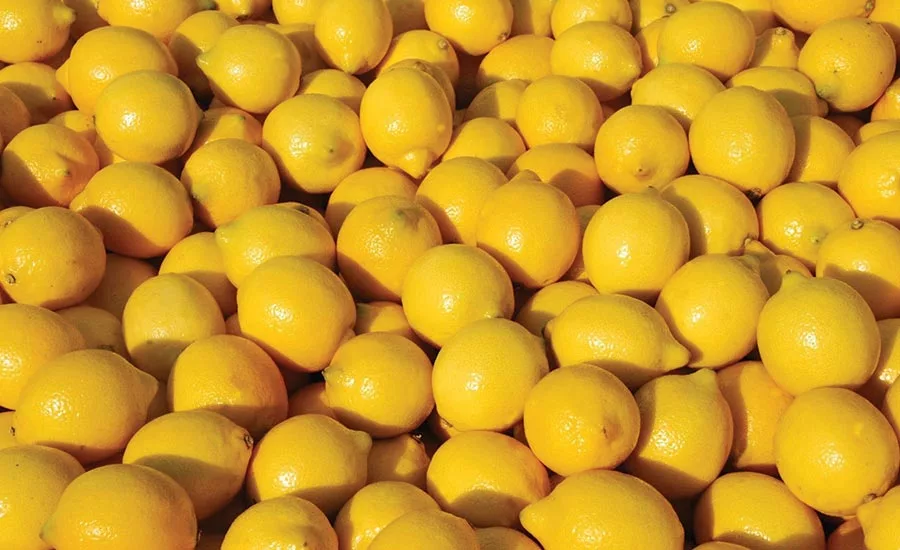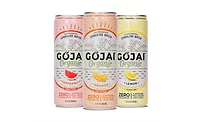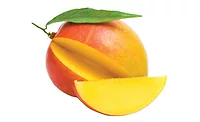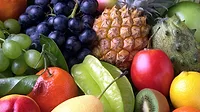Domestic and exotic fruits exemplify health and flavor
Functional benefits expand use of sunny-tasting ingredients

In the Beach Boys’ tropical-inspired hit “Kokomo,” the song’s lyrics extol the virtues of a “tropical drink melting in your hand” and “falling in love to the rhythm of a steel drum band.” Although not a catchy tune that makes one dream of a tropical vacation, more brands are “catching up and loving” the tropical trend by using sunny-tasting tropical ingredients and fruits in their beverages.
Domestic and exotic fruits finding favor in the beverage market include lemon, lime, peach and strawberry, which are commonly used in sparkling water, while up-and-coming exotic flavors include blood orange, passionfruit and guava, says Holly McHugh, marketing associate for Niles, Ill.-based Imbibe.
“Consumers are seeking out more adventurous sensory experiences, so brands are introducing exotic and unfamiliar fruits to consumers’ palates by combining them with popular domestic true-to-fruit flavors,” McHugh says. “… Blood orange hibiscus, pineapple passionfruit and strawberry guava are popular flavor combinations.
“Domestic flavors that are emerging include blackberry, raspberry, tangerine and mango,” McHugh continues. “All are rich sources of vitamin C and may support healthy digestion.”
John Cavallo, senior vice president at Citromax, highlights that the demand for natural, clean-label ingredients is driving development in today’s food and beverage industries.
“Consumers are more in-tune with reading product labels and look for healthy and nutritious products for their families,” Cavallo explains. “As a result, developers are interested in understanding and utilizing the benefits provided by fruit. The key issue is optimizing taste profiles, supply chain concerns and delivering the healthy ingredients the fruit can provide.”
The Carlstadt, N.J.-based company notes that tried-and-true citrus flavors like orange and lemon continue to be popular, but beverage-makers also are seeking regional flavors from around the globe.
“We see a demand in differentiation via exotic varietals such a yuzu, Persian black lime and calamansi,” says Citromax’s Director of Marketing Zeynep Taskin. “… We see demand for unique and complex flavor profiles with the inclusion of exotic flavors from a variety of beverage segments such as sparkling alcoholic and non-alcoholic beverages, RTD teas and juice-based products.
“Exotic fruit flavors help product developers be more innovative and bring excitement into categories such as carbonated soft drinks,” Taskin continues. “Cocktails are usually the first avenue for consumers to try these novel flavors as they tend to have a more adventurous approach when consuming alcoholic beverages. When it comes to the mass-produced RTD beverages, we see that the best practice is combining these exotic flavors with familiar, tried-and-true flavors that consumers know and love.”
As to which categories are formulating with fruit, Taskin points to exotic fruits as being an increasingly popular choice in sparkling waters and hard sparkling seltzers, with the fruit flavors enabling brands to offer more premium and adult flavor profiles.
Yet, health-conscious consumers are closely scrutinizing sugar content in beverages and looking for low calories and naturally occurring sugars versus added sugars, says Don Giampetro, vice president of innovation and quality at iTi Tropicals, Lawrenceville, N.J.
“Domestic and exotic fruits are widely used in beverages now to increase the juice content in beverages, reduce the added sugar content and potentially reduce the caloric load,” Giampetro explains. “Our expertise is in the tropical/exotic fruit area. Overall though, the consumer is coming down hard on all fruit now, exotic and domestic, because even though they help to prevent/limit/eliminate added sugar, the natural sugar content in these fruits are perceived negatively as they are still ‘sugar.’”
Punching up health
In the tropical/exotic arena, beverage-makers can choose from countries far and wide when it comes to sourcing the right domestic and exotic varietals, and recognizing the powerhouse punch these ingredients provide to one’s health and wellness, Citromax’s Cavallo says.
For instance, lychee, native to southern China and grown in South America, is high in polyphenols, vitamins and fiber. Acai, another South American fruit, is full of antioxidants and can boost metabolism. Additionally, dragon fruit, also known as pitaya from Southeast Asia, is rich in carotenoids and antioxidants and tastes similar to a kiwi, Cavallo says.
iTi’s Giampetro also highlights that dragon fruit can be used as a natural colorant in beverages because it is highly pigmented and vibrant, and also removes the need for any artificial dyes and colors.
Coconut water is a juice solution that has emerged in product development because of its versatility and health benefits, Giampetro says. “Coconut water blends well with many other fruits because it is light in color and flavor,” he explains. “Coconut water also has low sugar content, which contributes [to] juice content with lower levels of sugar.
“… Guava is an exotic fruit that is starting to pop up in more and more beverages,” he continues. “Guava comes in both white and pink versions, but the pink guava, with its distinctive pink color, provides a light pink hue to beverages and the flavor is fairly light so it can be blended easily with other, more dominant flavors.”
In addition to providing natural color to a beverage and optimizing taste, more products containing domestic and exotic fruits are emerging in store and online.
CHERRISH, Bellevue, Wash., is made from both the skin and pulp of 100 percent whole, USA-grown premium Montmorency tart and sweet Bing cherries. Benefits of the cherry juice include high anti-inflammatory and antioxidant properties, reduced insomnia, lower blood pressure and blood sugar, as well as quicker muscle recovery and reduced levels of chronic inflammation, the company says.
The tropical trend
Although experts note the health benefits and tropical juiciness of domestic and exotic fruits, Rodolfo Massone, head of juice and pulp at Citromax, notes that availability, authenticity, sustainability and traceability are among the challenges beverage-makers should consider before sourcing with these ingredients.
Citromax's Cavallo agrees: “In many cases, key concerns take into account supply-chain related issues, cost and the quality of the fruit and/or fruit juice concentrate, particularly when the new varietals are coming from as far away as Southeast Asia or other faraway places. Some of the more interesting and novel fruits and flavorings are following the taste treads from the Asian and Japanese beverage markets. Japan has been, for the longest time, an innovator for healthy, functional beverages, and the development of beverages with complex flavor profiles, whether it be beverages proving ‘cooling’ affects, interesting mouth and sensory sensation, high-aroma beverages or enhanced taste-impact sensations.”
Imbibe’s Aparna Oak, director of flavor innovation, notes that exotic fruits aren’t as readily available as domestic fruits, which drives up cost. Yet, there are ample amounts of domestic fruits available, and organic options of domestic fruits are more accessible.
Experts note that the consumer demand for naturally healthy beverages, flavorings and products will continue to resonate in the marketplace. They also suggest that more research will be under way to help beverage-makers and consumers understand how these ingredients play a role in delivering new flavor attributes.
“It has been known for many years that many fruits contain surface active ingredients that have mouth-coating properties,” Citromax’s Cavallo says. “These ingredients have been isolated and investigated to better understand how they can be utilized in consumer products. … With recent interest and findings in nanoemulsion technology highlighting a unique method to enhance ingredient bioavailability, more and more functional products can be developed with a true health benefit.” BI
Looking for a reprint of this article?
From high-res PDFs to custom plaques, order your copy today!





